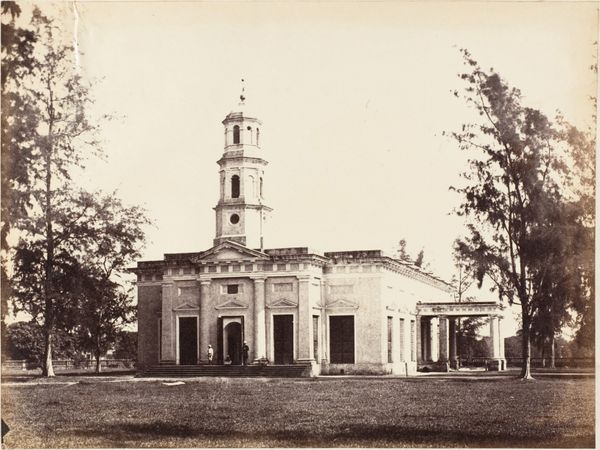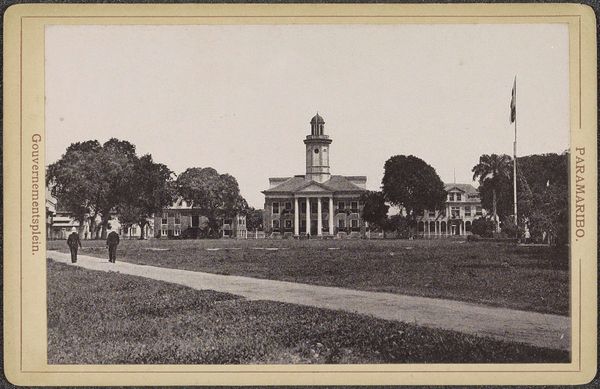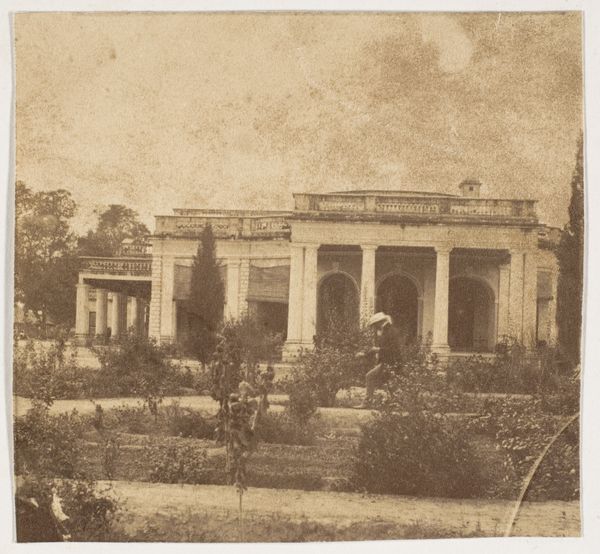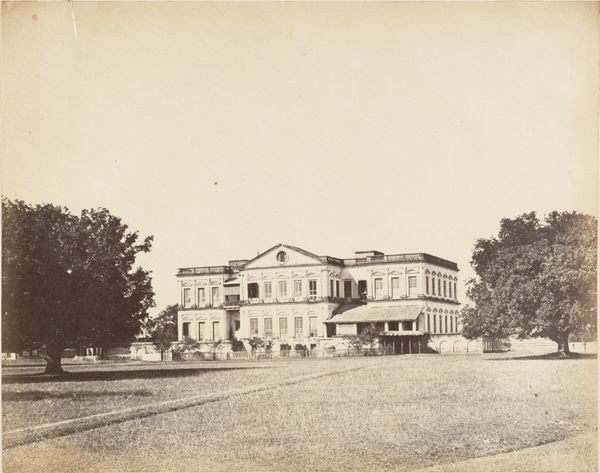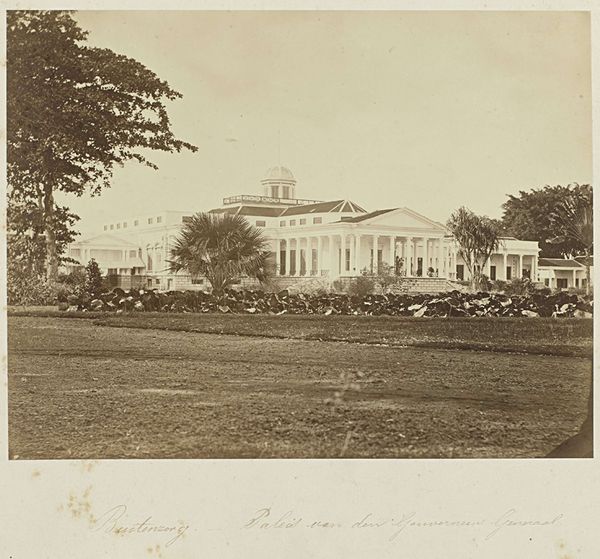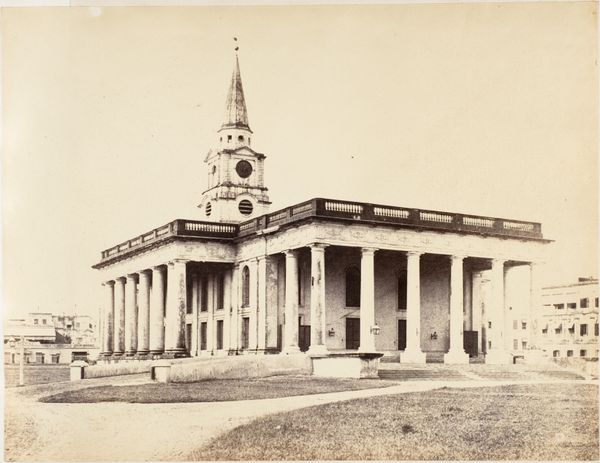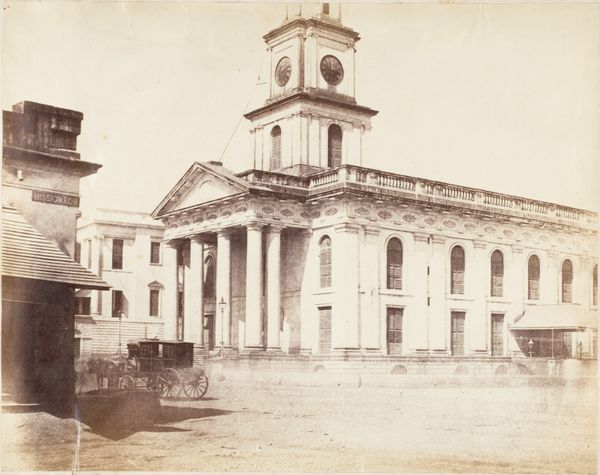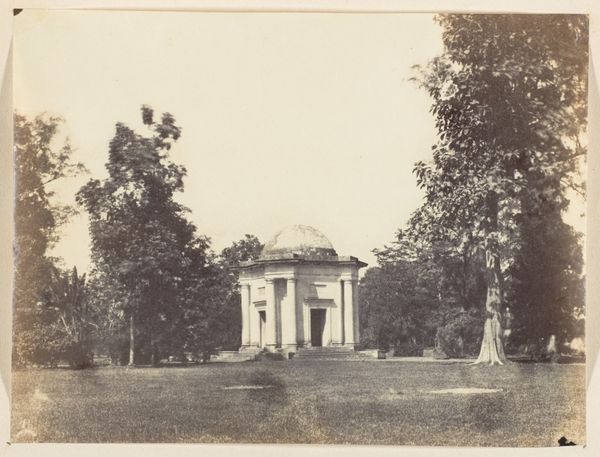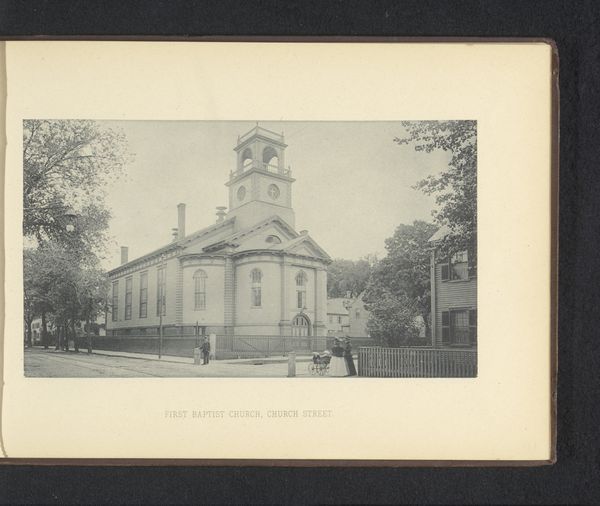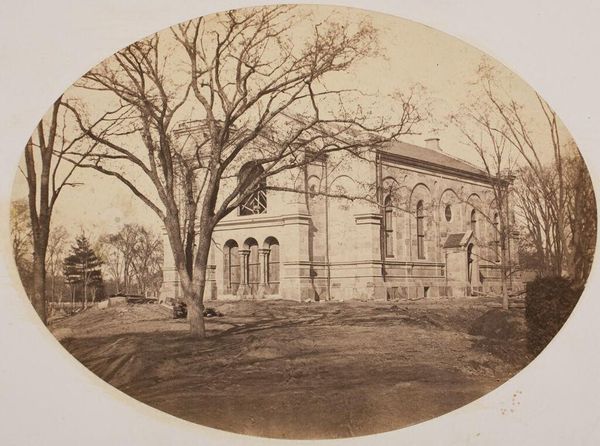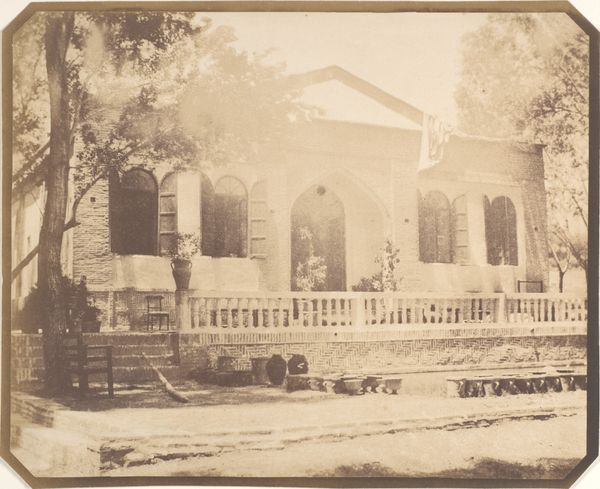
print, photography, albumen-print, architecture
# print
#
landscape
#
photography
#
19th century
#
watercolor
#
albumen-print
#
architecture
Dimensions: Image: 17.4 x 23.5 cm (6 7/8 x 9 1/4 in.) Mount: 20.9 x 28 cm (8 1/4 x 11 in.)
Copyright: Public Domain
Curator: Captain R. B. Hill’s albumen print, taken in the 1850s, presents the Dum Dum Church. Its formal architectural lines are softened by the surrounding foliage. What's your first take on this piece? Editor: It has this strange faded dreaminess, doesn't it? The church itself is solid and imposing, almost Roman in its design, but the fuzzy edges and monochrome palette make it feel like a ghost of itself. Curator: Indeed. The print exemplifies early photographic techniques, which inherently influence our perception. The location, Dum Dum, was a significant British military garrison. Thus, the church served the colonial community. Consider how the photograph represents power structures and faith. Editor: Colonial power... you can almost feel the weight of it in the symmetrical structure. I'm stuck wondering who those tiny figures at the entrance are. What stories do they have? Do they benefit from, or are they crushed by, this edifice? Curator: Precisely. They may embody both. The photograph aestheticizes colonial presence while eliding lived experience of British rule, notably the Sepoy Mutiny that had direct repercussions for this community not too long after the image was created. We must address such tension. Editor: Right! The staging—the balanced trees on either side— feels so deliberate, almost like an advertisement for the empire. I keep wanting to scribble outside the lines, inject some chaos. I wonder about the un-captured noise, the dust, the shouts... Curator: Photography itself as a tool, then. Consider how the artist mediates space and time. Hill has composed the image so it communicates particular ideology through landscape, faith, and empire. Editor: Well, the image does speak volumes, doesn't it? Even in its quiet sepia tones. So much history whispers beneath the surface. It’s a bit haunting, honestly, how present the past feels looking at this. Curator: And therein resides the potency of the work—revealing its layers requires careful excavation, mindful looking.
Comments
No comments
Be the first to comment and join the conversation on the ultimate creative platform.
